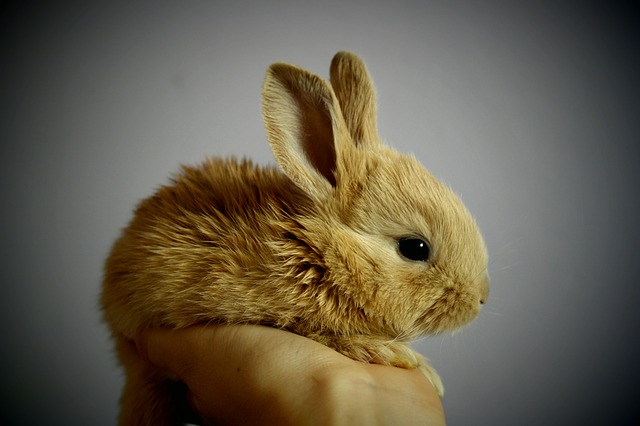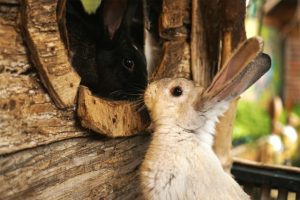
Ever wonder what the world looks like to your pet? The answer seems simple if you have a pet cat or dog since they both have forward facing eyes like you. Yet your rabbit has eyes on the sides of its face instead, so how does that affect how it sees the world?
Far-Sighted
While 360-degree vision sounds incredible, it does have its own downsides. For starters, only a narrow range in front of their face can be seen with both eyes. This means that rabbits will have good depth-perception and can see the world in 3D only in this one small spot, but that the rest of their vision is in 2D. This results in them being far-sighted and unable to see things up close, with the exception to this being the narrow range in front of them.
Blind Spots
Ever wonder why your rabbit doesn’t eat the treats you place right in front of it? While it could be because you’ve already spoiled it, it could also be because of the bunny’s blind spot. While rabbits have excellent vision and can see all around them, some parts of their vision is blocked off by their bodies. They have two main blind spots. The first is directly behind them, and is caused by the back of their head blocking some parts of their vision. The second is right in front of their nose, because the vision of their two eyes has yet to cross.
Colours and Light
While most people can see the full colour range of a rainbow, rabbits can’t. These bunnies, much like some colour-blind folk out there, have trouble distinguishing between red and green. This is because while humans have three colour detecting cones in their eyes (red, blue, and green), rabbits only have two (blue and green). Yet rabbits have more rods in their eyes than humans, and this allows them to see much better in the dark.
Why Do They See This Way?
While their view of the world may seem strange at first, it makes perfect sense when they’re in the wild. Rabbits are near the bottom of the food chain and are hunted by loads of different predators. As a result, their eyes have developed to help them avoid being caught. They have 360-degree vision to be able to see a predator no matter which direction it’s in.
They’re far sighted so they can start running before their hunter gets too close. Finally, they can see well in the dark because that’s when many predators will be trying to hunt them.





